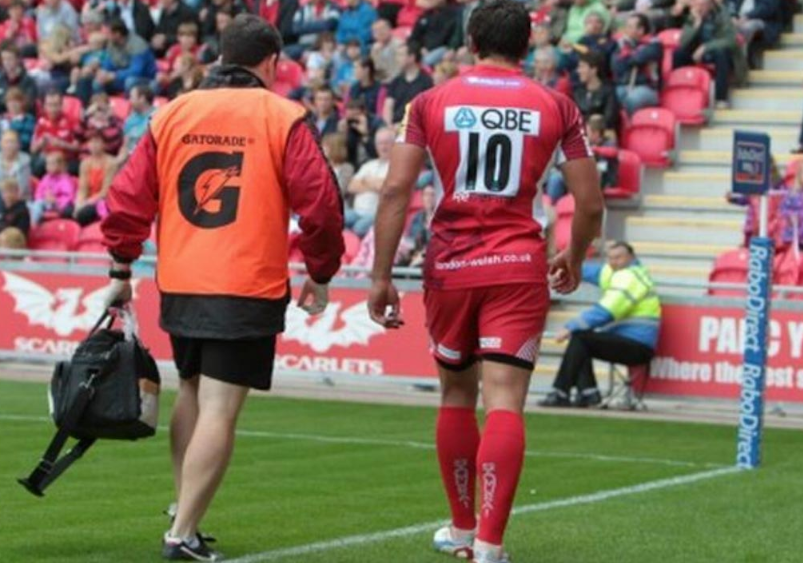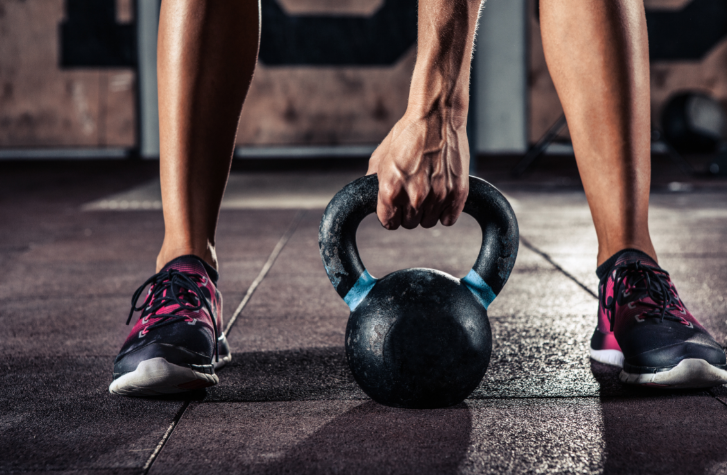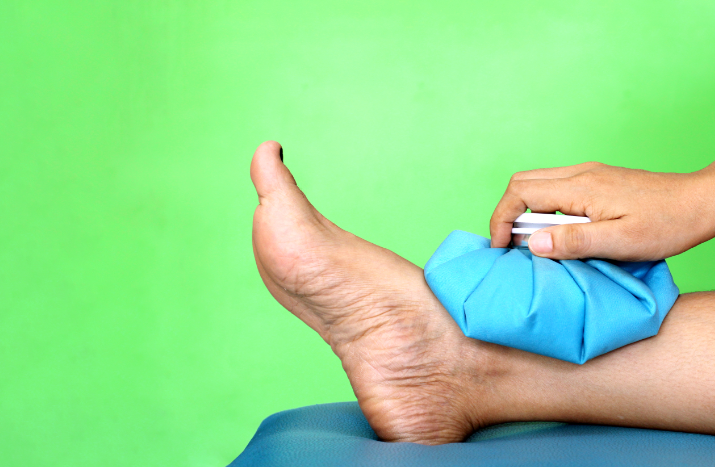The Top Tips to reducing injury in Rugby
By Mike James | 18th February 2020 | General, Advice
Welcome back to part 2 of our blog series on injuries in Rugby. In Part 1, we discussed how to treat concussion injuries, for this blog, we focus on trying to reduce the likelihood of general injury occurring.
With the nature of Rugby being a contact sport, it would be remiss to suggest we can prevent them. Here is elite Rugby Physio Chris Jenkins of of CJ Physio with Part 2.
1. Technical Proficiency in Tackle technique
Improving your tackle technique can reduce your risk of tackle related injuries - don’t use your shoulder as a battering ram!
Direct impacts can lead to AC Joint and SLAP /Posterior Labral injuries due to superior / posterior forces axially through the humerus into the Glenoid.
Good work done by Lennard Funk in this area of retrospective analysis of mechanism of injury and relating to MRI and Surgical findings . The different shoulder positions described during the mechanisms of injury lead to different patterns of Injury .
Improving performance of technical aspects in any sport can lead to more efficient movement and this could lead to a reduced injury risk . In rugby the best tacklers appear slick and accurate and utilise leverage, lateral movement , head-Neck-Shoulder and foot placement and technique matched to the size and the speed of their targeted ball carrier.
I have reviewed video and discussed with players post shoulder injury and it’s not uncommon for players to report inaccuracy or poor technique as a causative factor due to circumstances sometimes out of their control but occasionally poor technique choices have been made due to reasons unknown / unexplainable.
Working with players and coaches technique can be reviewed , refined and additional 5 -10 mins work on’s of targeted practice can be performed at the end of rugby training sessions in small groups . This can be controlled 1-1 , and planned tackled and progressed to 2 on 1 with unplanned and uncontrolled chaos in tackle scenario ( control to chaos journal ) .
Over a season this will add up to significant amounts of practice time and improvement of technical proficiency in tackle scenarios in games . The overall goal being a reduction in neck and shoulder tackler related injuries.

2. Strength and conditioning Programs to reduce non- contact soft tissue injuries
Good resistance exercise and fitness work performed in during the off season and pre season can make your performance better during the season and reduce your risk of injury. There are many injuries that plague a rugby player due to collisions and contact in training and games .
These injuries are inevitable and part of the sport.
A common and frustrating type of injury are acute and recurrent non-contact muscle injuries . These can be structural e.g trues tears as identified by history , clinical examination and imaging , but they can also be non- structural eg 2a/b Mueller Classification system.
There has been significant research progression over the last 10-15 years in the classification and suggested management of muscle injuries but there is still much room for improvement in their management and reduction in recurrence . Recent guidelines and reviews are available from the British Athletic Classification and management of muscle injuries ( see BJSM link ) and from the danish society of Physiotherapy.
Key issues that can predispose to muscle / tendon injury are strength deficits , local muscle endurance, central fatigue and CV Fitness levels . Maintaining and improving muscle function and conditioning e.g Neuromuscular control, , Hypertrophy, Strength, Power and local muscle endurance in the off season and maximising gains in the pre-season period will pay off In dividends in the long term in reducing muscle injuries .
Sticking to a strength and conditioning plan and periodisation system that plans your day / week and month over a season , with ample recovery time and recovery sessions can help reduce the risk of these injuries .
The off season may be a break from Rugby , but after 7-10 days the benefits of rest start to reduce and the effects of physical inactivity and deconditioning can cause a decline in athletics due muscle function . I believe that a longer break from contact / collisions is important (external forces ) but the time should be spent developing robustness and resilience ready to deliver and absorb these contact forces in season and be able to tolerate the non contact demands of the game.
3. Old Injuries
Getting players onto the field and ready for kick off is only 1/2 of the battle .
A recent AFL study has shown a heightened relapse / recurrence or common lower limb muscle injuries for 15 weeks post return to sport . Try and Ensure that the case is closed on old injuries as far as possible - the pain may be resolved but motor adaptions /inhibition and weakness has been shown to persist for a long time from hamstring research studies.
The management of an ACL knee injury does not end at return to play . There is a high likelihood of re occurrence on the same or opposite knee in the first 2 years and this may be due to ongoing subtle differences in motor adaptions post injury and neural inhibition that may reoccur due to slow recovering bone bruising or cartilage damage .
It is recommend that players with these types of injuries never take more than 2 weeks off resistance training throughout the year.
Small recurrences or knee swelling or effusion should be managed correctly and off feet conditioning options should be considered if these situations occur. The importance of self management is crucial here , as you are in a team sport , where team sessions are provided in the gym and on the field , and therefore below the elite level it is very difficult for coaches to provide individualised care.
It is your responsibility to communicate and inform coaches of any issues and changes to your own individual circumstances as soon as possible to allow for optimal management and team performance. Planning for this In advance will reduce stress and surprise factor for all involved. From personal experience, the elite players that last the longest within this sport maintain good routines and are consistent in all aspects of their preparation eg Prep, Diet , Sleep, Training , Recovery strategies.
4. Injuries by Rugby position.
There has been research into the trends and types of injury sustained by player position in Rugby Union. This is vital information and although we cannot predict who will get injured, by studying trends that have been picked up in long running study groups (RFU injury research project) , we can be armed with the knowledge that there may be additional areas that we can prepare for .
For example the players in the 2nd Row (4,5) have been shown to the experience more ankle injuries . Hookers (2) have more shoulder related injury issues . Kickers (10/15) have a greater prevalence of hip and groin related pain.
As an individual and accountable for your own health and body, this information can help reduce your likelihood of issues related to the movement analysis and forces experienced in your position .
This may allow for better self management , and you may want to spend additional time prophylactically working on problem areas for these specialised positions within a team. This could be done during dead time in the Gym e.g During an upper body session in the gym between sets , you could work on lower limb vestibular / proprioceptive exercises/ balance exercises eg Ankle balance drills
 5. Nutrition and Hydration
5. Nutrition and Hydration
To meet your individual needs and demands of your training and sport eg if you have to be 110kg then to maintain or increase your muscle mass you may need 2 grams + protein per kilo of BW per day ( article and link to info graphic. The body is in a constant state of breakdown (catabolic) and repair (anabolic).
The quality and quantity of the food and food groups that you are ingesting are vital to prevent the breakdown of protein and tissues within the body and to aid in fast turnaround of energy stores for what can be a challenging training schedule for elite and amateur players. Hydration strategies need to change depending on temperature and change of temperature if you play abroad.
6. Sleep
8-10 hours a night consistently reduces injury risk ( article and link to info graphic ). This is a standard requirement for most sports and is a non-negotiable that is an easy win with little discipline required . Learn to love your sleep and create an environment that promotes good sleep e.g. no screen time in bedroom/ correct temperature.
7. Training with Illness reduces your performance and increases your risk of injury.
The increased metabolic demands placed on multiple organs within the body during acute illness will lead to a greater stress placed on the MSK system. This requires medical management, and simple conditions like a cold or flu need to be identified, communicated and managed well early.
A simple rule of thumb is the ‘Neck ‘sign. If the illness involves upper respiratory symptoms only and no symptoms below the level of the neck ( super rugby article and protocol discussion ) .
Illness prevention is key and the use of good hand washing techniques and alcohol hand gel in team environments with shared gym facilities/ eating areas / hotel rooms etc is compulsory/ paramount.
Thanks for reading our blog series, for more sports injury related blogs and to find a therapist near you click here.
